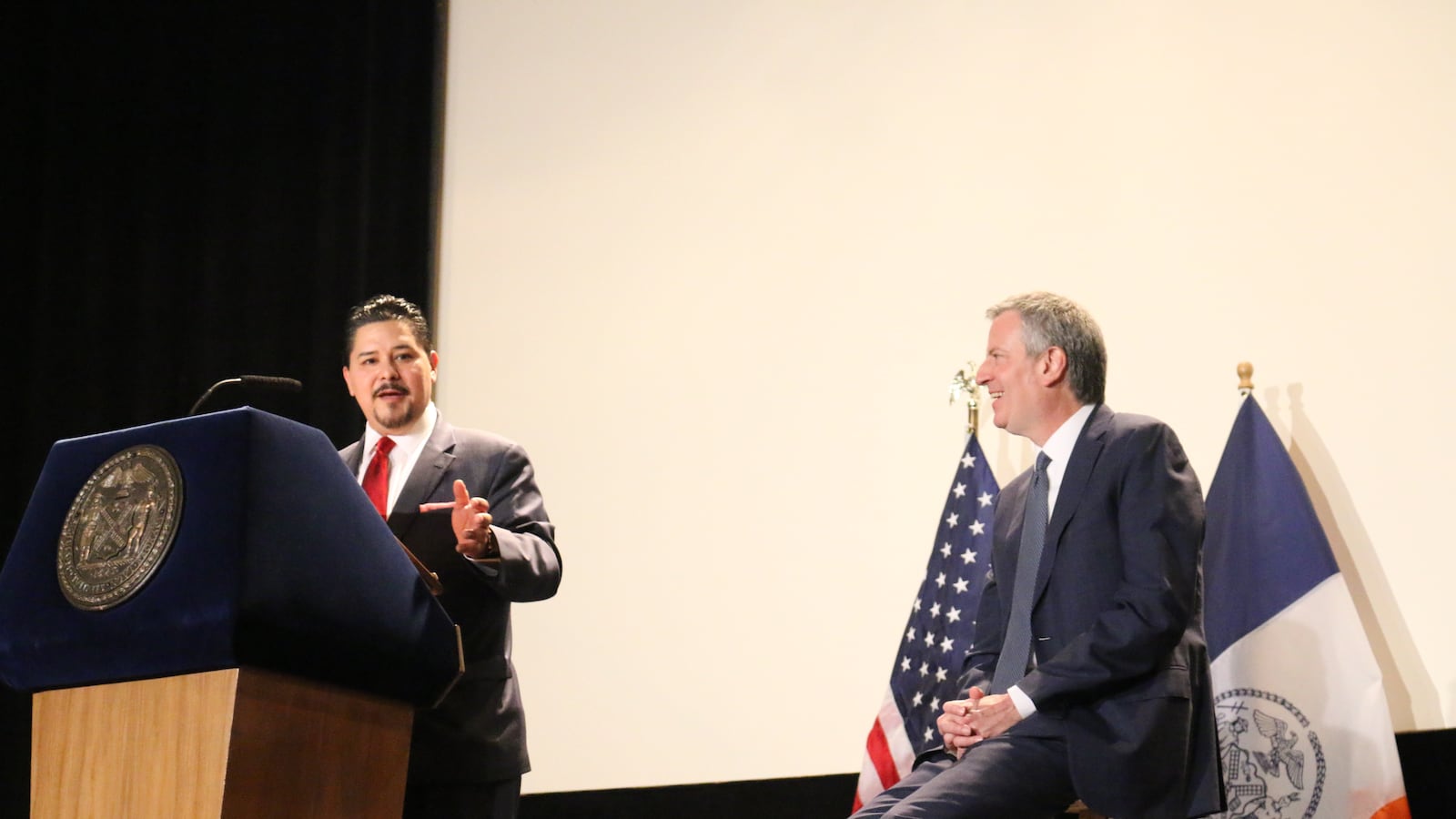Richard Carranza used his first public address to emphasize that while he is now the leader of the nation’s largest school system, he’s still an educator at heart.
“I still consider myself a teacher,” Carranza told hundreds of educators packed into an auditorium at Stuyvesant High School, who were participating in a training program during Spring break. “I just teach a little taller and older people now.”
Carranza’s brief remarks showed an eagerness to maintain consistency with his predecessor, Carmen Fariña, who often spoke of her experience as an educator and made it her mission to boost teacher morale. Under former Mayor Michael Bloomberg, being an educator was not a prerequisite for the job, and he sought to dramatically reshape the education system in part by ratcheting up accountability for teachers and principals.
“I don’t want you to read anything that says American education is failing — we’re not failing,” Carranza said to applause.
The speech did not include many hints about what his first orders of business will be, though he said he looked forward to regular school visits, a hallmark of Fariña’s tenure.
De Blasio, who offered brief remarks introducing Carranza, also sought to emphasize his teaching credentials.
“I knew the person who could lead all of you had to be one of you,” the mayor said, one of the few requirements he laid out publicly during the closed-door search process.
Borrowing from rhetoric he deployed during his initial bid for mayor, de Blasio implied that the school system needs to be shaken up and that Carranza is the person for that job. “I knew we needed a chancellor who had urgency running through him,” the mayor said.
But not only are the mayor’s policy goals essentially unchanged from his first term, many of the core elements of his “Equity and Excellence” agenda won’t be fully phased in for years. It’s also unclear how much leeway Carranza will have to chart his own agenda, or confront some of the system’s biggest challenges.
The backdrop of Tuesday’s speech, coming at a starkly segregated elite high school, also raised eyebrows.
Despite the mayor’s claim that “this school system’s future is based on creating equity,” Carranza’s unveiling came at Stuyvesant, a symbol of the system’s glaring inequities. Just 4 percent of the school’s admissions offers went to Black or Hispanic students even though they represent 70 percent of system’s student population, a reality that neither the mayor nor the new schools chief addressed on Tuesday.
Still, some of the educators in attendance said Carranza left them feeling optimistic.
“He’s enthusiastic, he’s going to be really supportive” of teachers, said Carmela McCann, a Brooklyn elementary school teacher who attended the speech. “He’s going to pick up exactly where [Fariña] left off.”
You can read Carranza and de Blasio’s full remarks here.
Correction: An earlier version of this story misstated the proportion of black and Hispanic students offered admission to Stuyvesant High School this year. It was 4 percent, not 10.4 percent.

